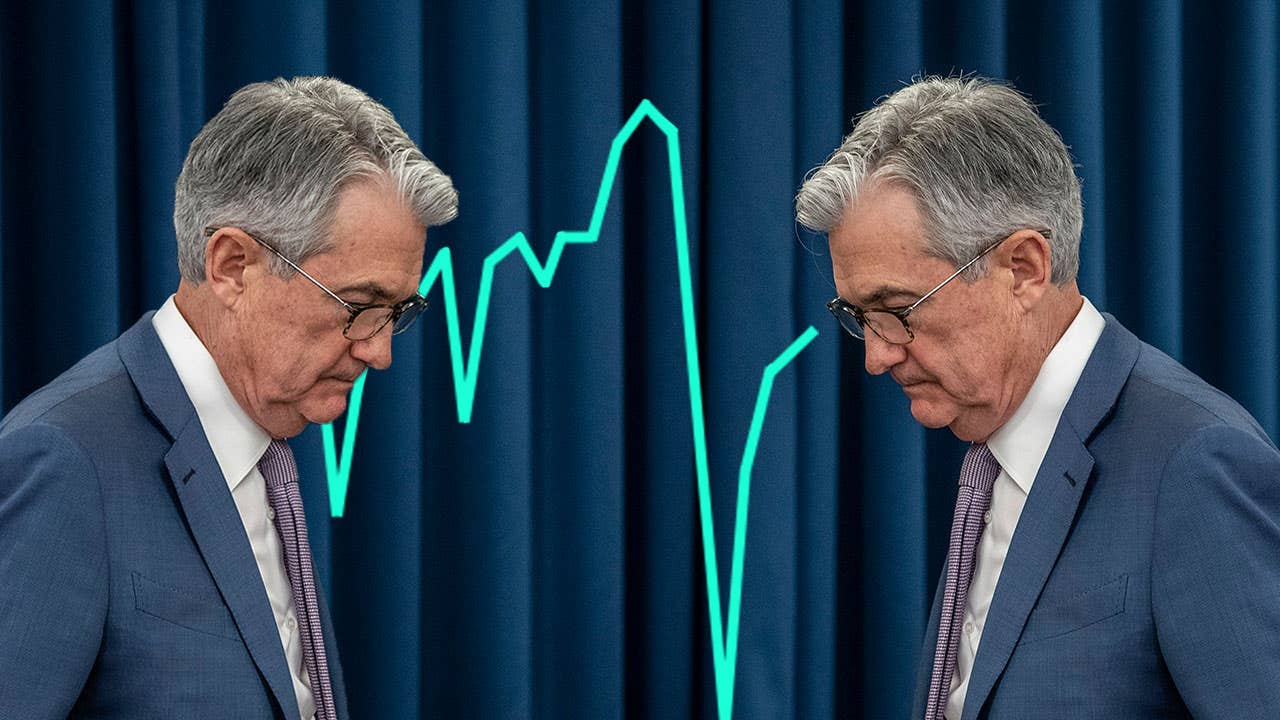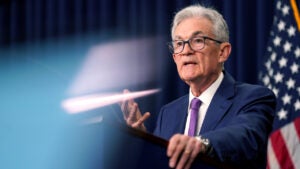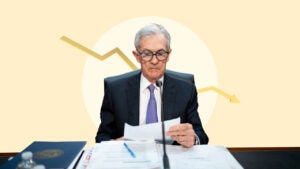Preview of the Fed meeting: 4 big questions facing the Federal Reserve post-coronavirus

Both the Federal Reserve and the U.S. economy are at an inflection point. Officials’ June meeting is an opportunity to reassess just how well their actions are working so far and if any additional steps need to be taken.
Fed officials for months have been deep in the trenches of a “whatever-it-takes” moment to fortify the financial system against the coronavirus pandemic. Officials went farther and faster than any previous U.S. central bank, taking steps that include slashing interest rates to zero, creating 11 different lending vehicles, buying as many government bonds as necessary and tiptoeing into corporate and municipal debt markets. The Federal Open Market Committee (FOMC) is widely expected to leave rates unchanged.
But with every state across the nation reopening in some capacity while Americans are hopefully getting called back to work, many experts have suggested that the deepest and most severe recession since the Great Depression could be coming to an end – though the economic pain is far from over. It highlights the importance of nimbleness and flexibility in the Fed’s fight to keep the recovery on solid footing.
“They’ve got to be a little bit pleased that the economy is trying to rebound, but the problem is, we’re rebounding from the Mariana trench basically,” says Kim Rupert, managing director of global fixed income analysis for Action Economics. “It’s going to be a long, hard slog, but it’s a start. Hopefully, we’ve reached the bottom.”
Here’s four of the biggest questions facing U.S. central bankers as they wrap up their two-day meeting in Washington on June 10.
1. What will happen to the U.S. economy?
If the coronavirus pandemic has highlighted anything, it’s that you can’t predict where a recession will come from or when it will arrive. The same goes for predicting the breadth and scope of the pain.
Officials on the U.S. central bank are being whipsawed by differing forecasts and realities – ones that heavily depend on states’ stay-at-home orders, the infection path of the virus, business and consumer confidence and scientists’ abilities to create a vaccine that can get the wheels of commerce chugging along safely again.
It’s well accepted that the U.S. economy will contract at levels unlike anyone has ever seen in the second quarter of 2020. A tracker out of the Atlanta Fed predicting gross domestic product (GDP) – the broadest scorecard of the U.S. economy – will show that activity collapsed by 52.8 percent, the worst drop on record.
But the biggest unanswered questions are what lies ahead, and minutes of the Fed’s April gathering suggest that could be anything from bad to outright horrible. Another wave of infections could mean another period of social distancing and stay-at-home restrictions that put further strain on growth, employment and activity.
Yet, even in the best-case scenarios, economists see elevated unemployment well into 2021 and a lower-for-longer period of economic malaise. Projections from the Congressional Budget Office forecast that growth will take 10 years to return to normal.
“The staff judged that a more pessimistic projection was no less plausible than the baseline forecast,” the Fed wrote in records from the April meeting.
“The economy is reopening, so there’s a lot of wait and see involved with that,” says Greg McBride, CFA, Bankrate senior economic analyst. “Does the virus have a resurgence? Is the recovery something that’s sustained? To what extent do we see people being called back to work? What’s the level of economic activity relative to what it had been pre-pandemic? These are all data points that are going to get close scrutiny and will factor into the path of both monetary and fiscal policy going forward.”
2. What will the central bank’s next steps look like?
But just as no one knows what the path forward is going to look like, it means agility will be key for U.S. central bankers.
That may be why the Fed has stayed clear of giving specifics when it comes to communicating all that it’s willing to do in response to the pandemic. In public remarks, Fed Chairman Jerome Powell has stressed on multiple occasions that officials “will continue to use our tools to their fullest until the crisis has passed and the economic recovery is well under way.”
“When Powell says the Fed is committed to doing anything it takes for as long as it takes, that’s pretty much partly forward guidance,” says Steven Skancke, chief economic adviser at Keel Point. The FOMC is focused on “addressing and mitigating the virus to the fullest extent that they are able with the policy tools that they have.”
But some officials have given more specific guidance as to what they’re preparing to do, should the economy need more support.
Yield curve control: Making sure interest rates stay low
New York Fed President John Williams is one of them. Williams, in a May 27 interview on Bloomberg Television, said officials are “thinking very hard” about instituting a policy commonly known as “yield curve control.” Fed Governor Lael Brainard floated the idea toward the end of 2019 as a crisis response possibility, and some committee members were found to be mulling over the policy during the Fed’s April meeting, according to minutes from that gathering.
Simply put, the policy is a way of making sure interest rates stay at rock bottom all along the borrowing curve by buying certain Treasury bonds of different durations.
How would the program work? The Fed might target a 0.25 percent yield as a ceiling on the three-year Treasurys, possibly even five-year bond, Rupert says. The Fed could also cap yields at a certain level all the way out to the 10-year rate, which would be similar to the Bank of Japan’s strategy.
It’s possible the Fed could plan to cap yields at its June meeting, though it’s also likely that officials may want to wait-and-see how the markets and the economy evolve in the coming months.
“The Fed is pretty assured that we’re not going to see yields spike higher anytime soon,” Rupert says. “They’ll take a more laissez-faire type of posture, letting the markets work for now. They’re more concerned about getting the economy back on track and providing as much stimulus and liquidity as we can to get us through this.”
Forward guidance: Pledging to keep interest rates low
But for Fed officials, the power of the pen is just as powerful as the rate cut itself – and officials could also adopt a more formal “forward guidance” strategy to signal to U.S. consumers and businesses that rates aren’t going anywhere from rock bottom anytime soon.
That possibility also made its way into the Fed’s meeting, with officials mulling over two different strategies for communication: one that’s outcome based and another that’s date based. Outcome-based forward guidance is primarily based on data, with officials providing a specific threshold for inflation or unemployment that they’d like to see before lifting rates. Date-based guidance, meanwhile, are just as they sound: No rate hikes until a certain time period has lapsed.
Officials in June may provide more specific guidance on rates, but they also could choose to wait on that front as well, given how much of the outlook is uncertain. Even so, the Fed’s communications thus far have helped to boost lending, quell jittery markets and shrink credit spreads, meaning it’s at least been working.
“Just the fact that the Fed said they will be there to support a lot of these fallen angels has been beneficial,” Rupert says. “They actually haven’t even had to use their policy power. Just their jawboning has been sufficient.”
3. How well are the Fed’s emergency lending tools working?
Jawboning has been an especially powerful tool when it comes to the Fed’s emergency lending programs. The Fed’s mere promise of planning to buy corporate bonds down the road helped to revive a frozen market paralyzed with fear.
When officials last met in April, just four of its 11 facilities were up-and-running. Now, the Fed’s most prominent crisis vehicles – the Municipal Liquidity Lending Facility and its corporate credit vehicles – are up-and-running, while its three Main Street programs are just days away from being fully operational. Those programs help small- and medium-sized businesses unable to take advantage of Small Business Administration (SBA) lending gain access to funds.
Powell and the Fed drew criticism from lawmakers on Capitol Hill for the programs’ eligibility terms, especially when it came to the Fed’s city, state and municipal lending programs. During a May 19 testimony, lawmakers feared that the money might not filter down to the jurisdictions with the biggest need.
The Fed has since revised three times who’s eligible to participate in those programs. The most recent June 3 revision allows for at least two cities or counties in every state to participate directly, regardless of how big they are.
Officials will likely want to keep an eye on the size and scope of the facilities and how well they are working to help revive a crunched financial system. The press conference following the gathering could provide insight into how officials are thinking about the future of the programs.
“They’re looking to support employment and mitigate the ravages of recession as best they can,” Skancke says. “They’re making sure that employers at small businesses, medium-sized businesses and even big businesses have every opportunity to get going again.”
4. What will the Fed’s new forecasts, projections show?
And for those most-invested Fed watchers, the U.S. central bank will be reviving their widely-watched forecasts for the first time since December. Those include officials’ quarterly “dot plot” chart, which tracks where officials think rates are heading in the years ahead, and their Summary of Economic Projections (SEP), which shows where officials are expecting growth, unemployment and inflation to head.
It’s likely going to show a wide range of views, and some forecasts are no doubt going to be extremely bleak. But expect them to reaffirm the message that the Fed will be keeping rates at rock bottom for years to come.
What this means for you
Even though it’s an attractive time to borrow, the best financial step you can take is building up your emergency savings, given that no one knows just how long the downturn will last. Find a savings account that best suits your financial needs, many of which still have a competitive rate higher than traditional brick-and-mortar banks. Experts recommend building three to six months’ worth of funds.
“Nothing is an antidote for uncertainty like knowing you have money tucked away for the unexpected,” McBride says.
If you don’t have a lot of breathing room in your budget to build up that fund, consider finding ways to cut back on your monthly expenses. Meanwhile, take advantage of lower borrowing rates by considering a balance transfer card to significantly reduce your monthly payment and consolidate your balance.
Meanwhile, would-be homebuyers may find it an attractive time to buy, while homeowners might be able to score a sub-3 percent mortgage rate for refinancing if they do the research.
And don’t underestimate what’s left in the Fed’s toolbox, according to Rupert. Even though the Fed doesn’t have any more room to cut interest rates (unless it dips into negative territory, which officials are vocally reluctant about doing), forward guidance, quantitative easing and yield-curve control can still be powerful – as can Fed communication in general.
“Q.E. and forward guidance ensure the markets that rates are going to stay down, that there’s not going to be any kind of upward drift that would lead to negative consequences,” she says. “It gives businesses and individuals the opportunity that they might not have to rush into an investment, they can take their time knowing that rates are going to stay here.”
Learn more:
- Coronavirus relief and stimulus plans: Here’s everything Washington has done (and proposed) so far
- What to do if you can’t pay your loans during the coronavirus
- What to do once your coronavirus unemployment benefits run out
Why we ask for feedback Your feedback helps us improve our content and services. It takes less than a minute to complete.
Your responses are anonymous and will only be used for improving our website.
You may also like

How the Federal Reserve impacts savings account interest rates





